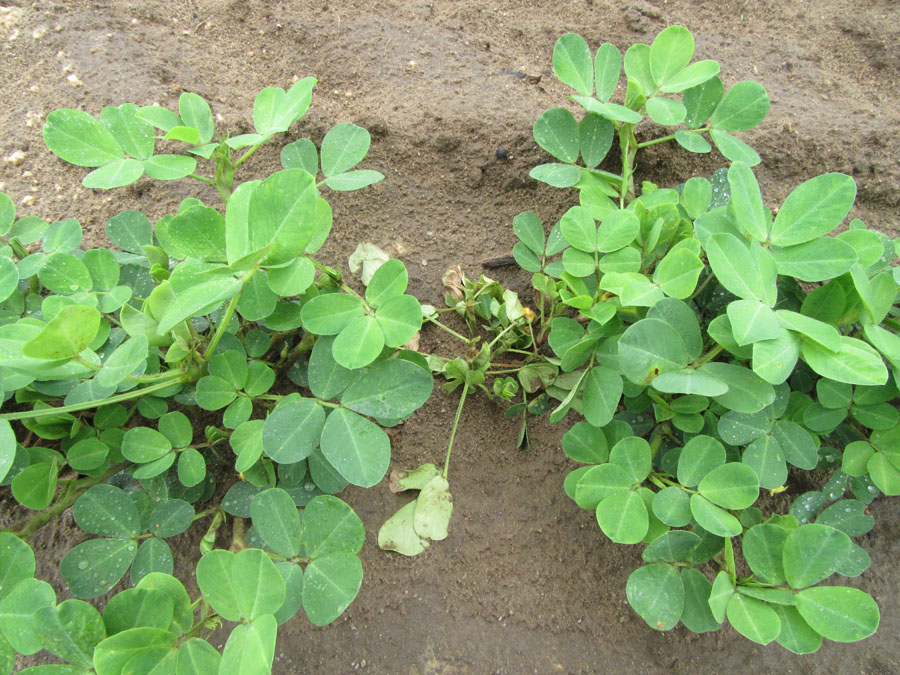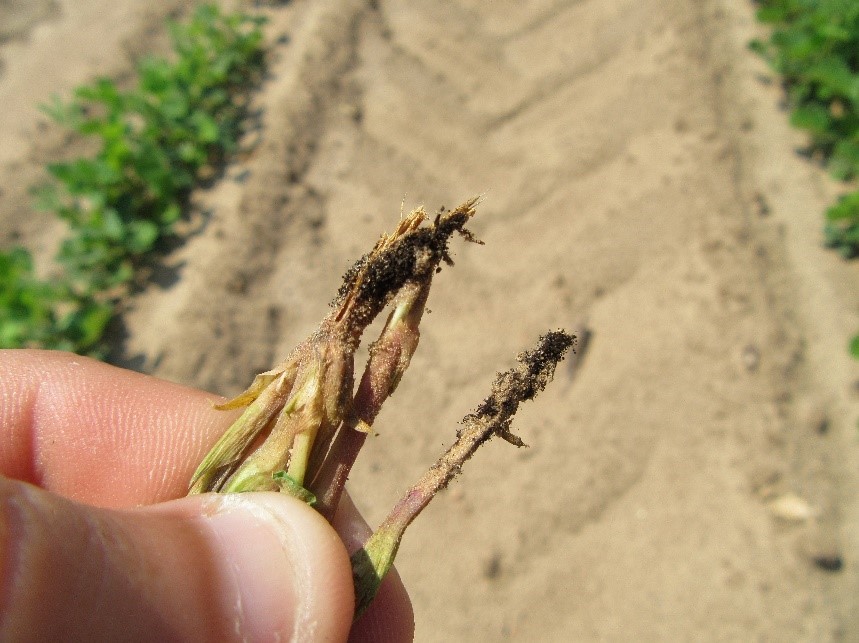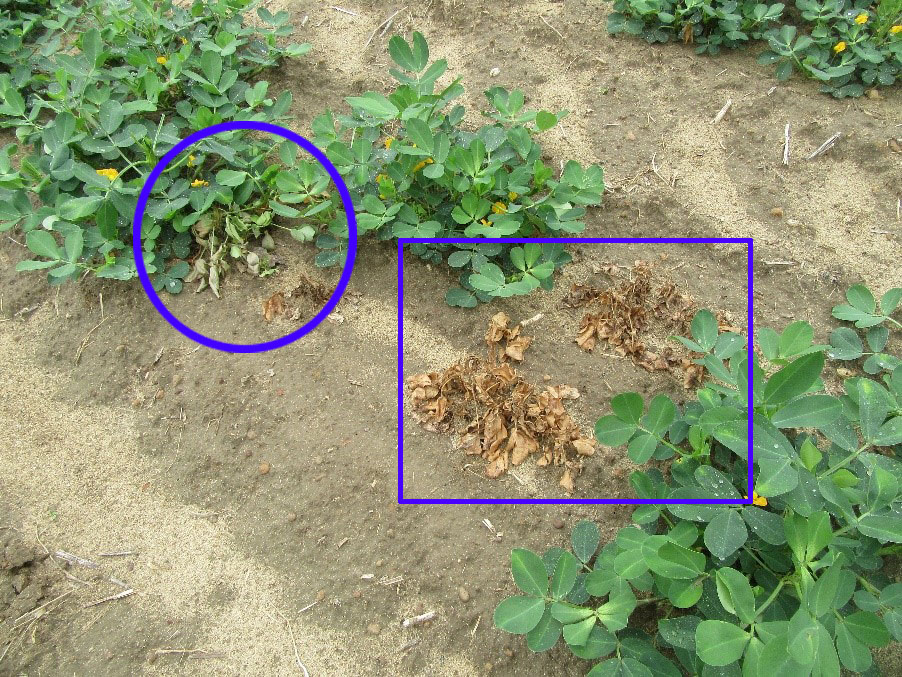Figure 1. Young peanut plant in Jackson County exhibiting symptoms of crown rot (Aspergillus niger). Photo by Ethan Carter.
The severity of crown rot varies from year to year, despite its general presence in peanut fields early in the season. Caused by Aspergillus niger (different Aspergillus than produces aflatoxin), crown rot may result in stand losses as high as 50%, but usually varies from a trace to 1%. This year, a number of producers throughout Jackson County have noticed peanuts that appear to wilt and die at an alarmingly fast rate (Figure 1). This concern is understandable as the impact has varied from slight concern regarding a few wilted plants to replanting an entire field. Plants are most susceptible to crown rot as seedlings or as young plants less than 30 days old. A tell-tale sign of this disease are black spores that form at the soil surface, along with deterioration of the infected stem or limb tissue (Figure 2).
Figure 2. Black spores on peanut, indicative of crown rot (Aspergillus niger). Photo by Ethan Carter.
Crown rot can be either seed-borne or soil-borne, and tends to be more prevalent in fields lacking organic matter or crop rotation. It has also proven to be problematic during hot dry weather, similar to what we have been experiencing over the past few weeks. Rainfall and irrigation events can both work to minimize risk for the disease in a field. Unfortunately, all commercial cultivars are susceptible to this disease, with bunch type cultivars usually being less susceptible than runner types. Once plants are infected, there is no treatment for the disease. The best preventatives include crop rotation and good coverage of seed treatments at time of planting. Fungicidal seed treatments that can be applied at planting include Dynasty and Abound.
Figure 3. Field suffering from crown rot (Aspergillus niger) in Jackson County. Photo by Ethan Carter.
Producers with plants that are under 30 days old or around that age may see some symptoms of crown rot. Figure 3 shows a peanut field planted in twin rows, with a newly wilted plant circled and plants that have already turned brown and died shown in the rectangle. With the number of fields exhibiting the disease throughout Jackson County thus far, it is likely that surrounding counties may also encounter a high disease rate. One diagnostic feature of the disease is the tuft of black fungal spores around the plant just below the soil surface. Gently removing the soil from around wilted plants can reveal the black spores. If you have questions, please contact your local Ag Extension Agent.
- 2024 Panhandle Row Crop Short Course Highlights & Presentation Links - March 8, 2024
- 2024 Wiregrass Cover Crop Field Day – Rescheduled – March 29 - February 16, 2024
- Panhandle Row Crop Short Course – March 7 - February 9, 2024



